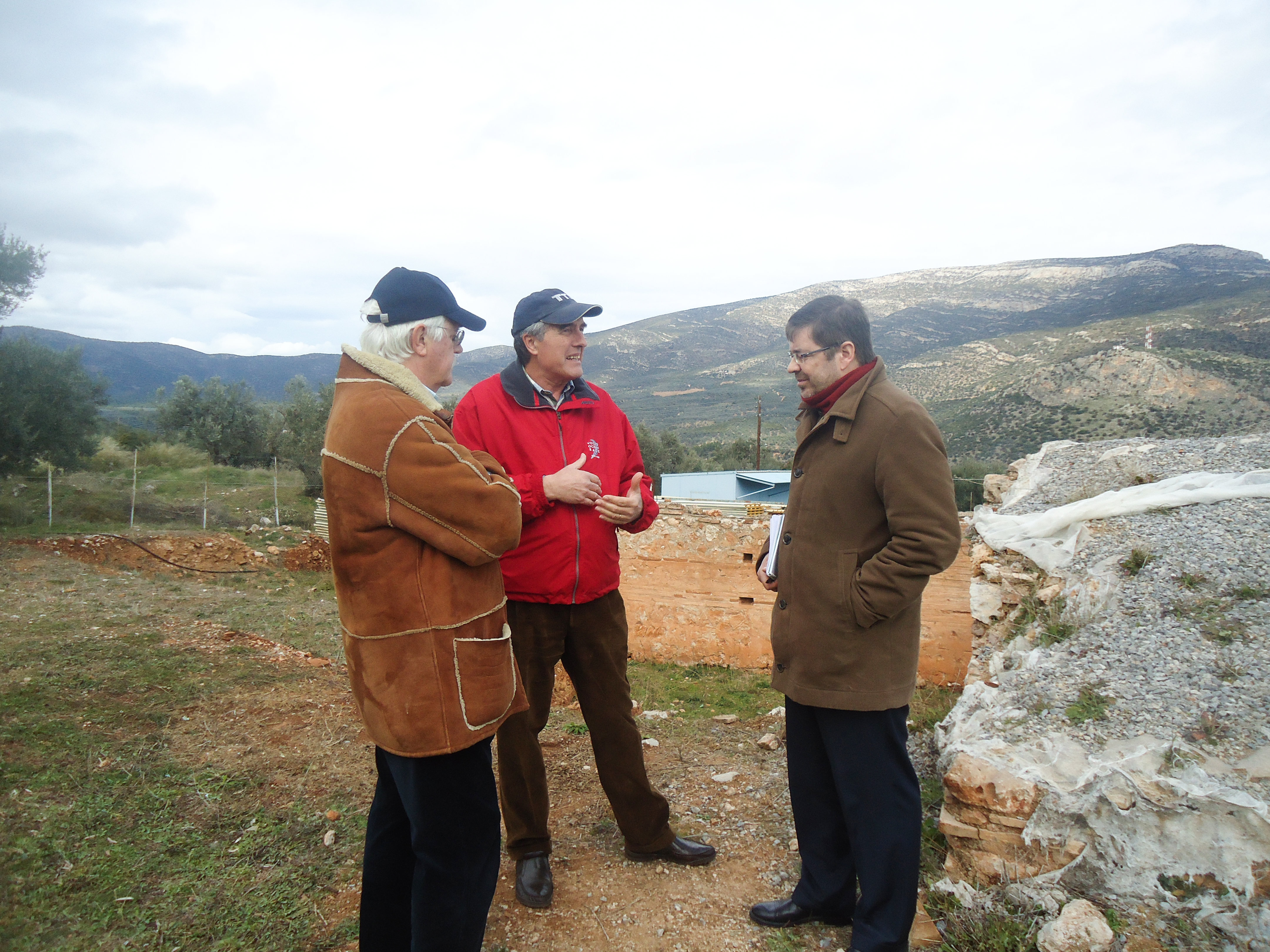Loans to thousands of projects in every region of Greece highlight the value of cooperation between national authorities and EU institutions like the European Investment Bank.
At the Greek Economy Ministry Stella Alexopoulou helps choose projects that get EU grants and loans. Like providing notebook computers for high schoolers in all thirteen Greek regions. “One laptop per student still is a rare thing in Greece,” she says. During her visit to one of the lucky schools in Kozani, northern Greece, she found “the students and the teacher so thrilled to work together on the new applications.”

High School in Kozani - Some of the students who benefitted from a personal laptop, with their teacher Bob Apostolou
The EUR 2 billion multi-sector framework loan behind the laptop and other projects was signed in 2010. It’s the EIB’s largest in Greece. The EIB inked another EUR 50 million loan a few years later to help more small projects across the country, and added EUR 1 billion in 2015. The EU Bank and the Greek government are now working on a further loan in the range of EUR 700 million.
The EIB financing is a structural programme loan, a special type of framework loan. “It’s a flexible and effective instrument to tackle multiple projects in various sectors, such as those co-financed by the European structural funds supporting integrated territorial development plans,” says Fernando Camano, an EIB engineer. “These investments are already bringing tangible results in and around the local communities.”
Small is beautiful
The loans supported over 123 000 small projects around Greece, including schools, archeological museums, hotels, tourism, vocational training and technology, research, environmental programmes, and water and waste projects. They also supported small and medium-size companies, the backbone of the Greek economy.

Edessa, central Macedonia - protecting the environment
The school in Kozani is one of the many success stories for the framework loan. In Kleitoria, western Greece, a new environmental school offers children special environmental programs, summer camps and outdoor activities such as biking, rock climbing and trekking.
The EIB aims to invest more in youth employment and innovation. In the Peloponnese region, the University of Patras is known for its innovative research facilities. As part of the framework loan, the EIB backed an incubator to help bring students’ ideas to the market called Aid in Greek Technology Cluster in microelectronics. University laboratories assist existing businesses, but they also counsel people who want to start a new company.
The incubator has been replicated by the University of Ioannina in north-western Greece, where the EIB supported the extension of the Scientific and Technological Park of Epirus.

From left to right: Boulafenti, Camano and Alexopoulou at the Scientific and Technological Park of Epirus, University of Ioannina.
Another EIB-backed project helped close dumpsites or construct sanitary landfills. “More impressively, it helped convert some dumpsites into public gardens,” says Camano.

Rehabilitation of 12 dumpsites in Attica – Camano on site visit.
The largest project backed by these EIB framework loans is the PATHEP Railway Corridor, which modernises the Patras-Athens-Thessaloniki-Idomeni/Promahonas rail line, a railway node at Acharnes, a freight complex at Thriassio and its rail link to the Neo Ikonio Container Terminal of the Port of Piraeus.

PATHEP Railway Corridor - Inauguration of the railway Athens-Thessaloniki
Cooperation and expertise
All these investments received key financing from EU structural funds – this was managed by George Logothetis, Head of the Department at the Ministry of Economy.
But the country still required support to meet the national co-financing obligations. The Bank’s Structural Programme Loan was able to fill this gap by pre-funding a share of the national co-financing obligations. Since 2007, the EIB has matched the European Structural and Investment Funds with over EUR 34 billion of Structural Programme Loans across Europe.

The loans supported the expansion of the Astir Palace hotel close to Vouliagmeni, south of Athens
“Without the EIB and the European Commission’s cooperation, many of these projects would have been postponed or would not have been possible at all,” says Niki Boulafenti, who also worked at the Greek Economy Ministry.
The EIB loans accelerated the absorption of the EU funds and this was eased by the collaboration of the Greek government. “We ensure that the Bank’s product mix and expertise are available and ready to use for the Greek authorities. Our technical assistance is supporting project preparation, implementation and monitoring,” says Christos Kontogeorgos, the EIB investment officer currently working on the loans.
The Bank’s expertise on the ground coupled with technical assistance played a big role upstream and downstream. Both were crucial to help identify, develop and monitor the projects.

EIB-backed archaeological site of Herodes Atticus in eastern Peloponnese
The appraisal of the projects had already identified numerous risks, with high potential for things to go wrong. Boulafenti, with her auditor’s background, helped putting together a Risk Assessment and a Mitigation Action Plan. This helped selecting the sample of projects that needed close monitoring.
During 2011 and 2012, Boulafenti, Alexopoulou, Camano, together with Nadia Samouelian and Giorgia Diamantokou were on site visits inspecting, appraising, correcting, identifying best practices and lessons learned every month. As the saying goes, teamwork makes the dream work.
